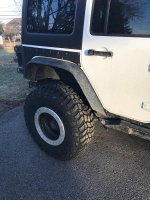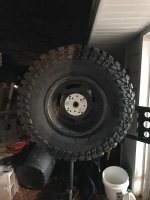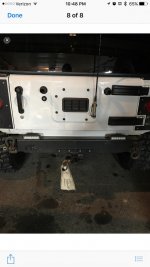this is correct, according to that article. however, with Torque being the easily measurable byproduct of what you are actually looking for (clamping force) any and ALL torque specs are the center of a mean target to yield "about this much clamping force" I would lean on the side of caution reducing by 25% though. this is not a straight forward mathematical problem, lots of things come into play. thread pitch, diameter, tooth profile, material, friction coefficient of the lubricant, film thickness of the lubricant... :yawn37: etc... besically, a blanket statement of "-25%" is an "I'm an engineer" statement, which around here we all know is BS
View attachment 244383
Metal fatigue is a term for analyzing the life-cycle of a particular part (a fastener in this discussion) while this is important to keep in mind, for this specific example it isn't as critical and let me explain why...
the grade-5 3/8-16 coarse thread fastener that ships with the wheel has a maximum dry working torque of 33 ft-lbs; @ which, it should produce somewhere in the ballpark of 4940 lbf (clamping force). ATX instructs us to dry torque the assembly to 24 ft-lbs, Very nearly 25% less then maximum dry working torque.
The entire clamping load comes from the bolt head, pulling though the shaft of the bolt, and to the thread engagement. As you tighten the bolt, the distance between the bolt head and thread engagement shortens. so what happens when the distance between the bolt head and the thread engagement can no longer shorten? (like when the beadlock ring is flush to the rim) If you continue to tighten the bolt, the bolt head will remain the same distance from the thread engagement, however, stress is introduced into the bolt, creating the clamping force. When the stress in the bolt exceeds the mechanical limit for elastic load of the material, the bolt will "stretch" past the point of returning to its original state,
known as Creep. However, clamping force will still increase up to certain point depending on the bolt material. this is why a lot of headstuds, flywheel hardware, etc are to be replaced every time they are loosed. inorder to produce the clamping force required for the application, the elastic limits of the bolt material had to be surpassed and bolt "creeped". Because of that, the bolt is no longer as strong as it used to be (it is fatigued)




